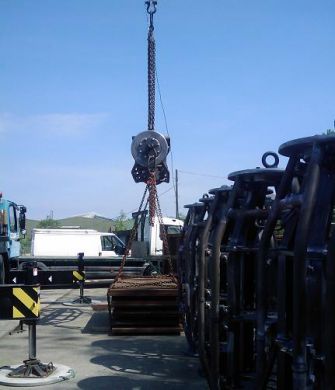Load Testing
Load testing can be classed as a destructive test - but only in failed tests! A simple example of load testing is when you stand back and admire something you have made, then stand on it to see how strong it is.
Load testing is often used to certify lifting equipment. An annual test at 1.5 times the safe working load (SWL) might be carried out to give confidence that the equipment can safely lift it's designed working load in daily use.
As with most testing methods, procedures would normally be issued and results recorded. Equipment manufacturers might use this method to test beyond the stated capabilities to prove a design and test welds in critical areas such as lifting points.
The testing can be done in various ways, the force applied by hydraulics, weights, or other machines. Use of electronic load cells is quite common, used alongside built in weighing equipment in mobile cranes.
The force is usually increased slowly until the desired load is applied, then it is left to rest for a period of time, then inspected, sometimes followed by other methods of testing, such as dye penetrants.
The first picture shows a weldment being tested, using a stack of 50mm thick steel plate as weights. The second shows the calibrated load cell, reading 8.07 tonnes.

